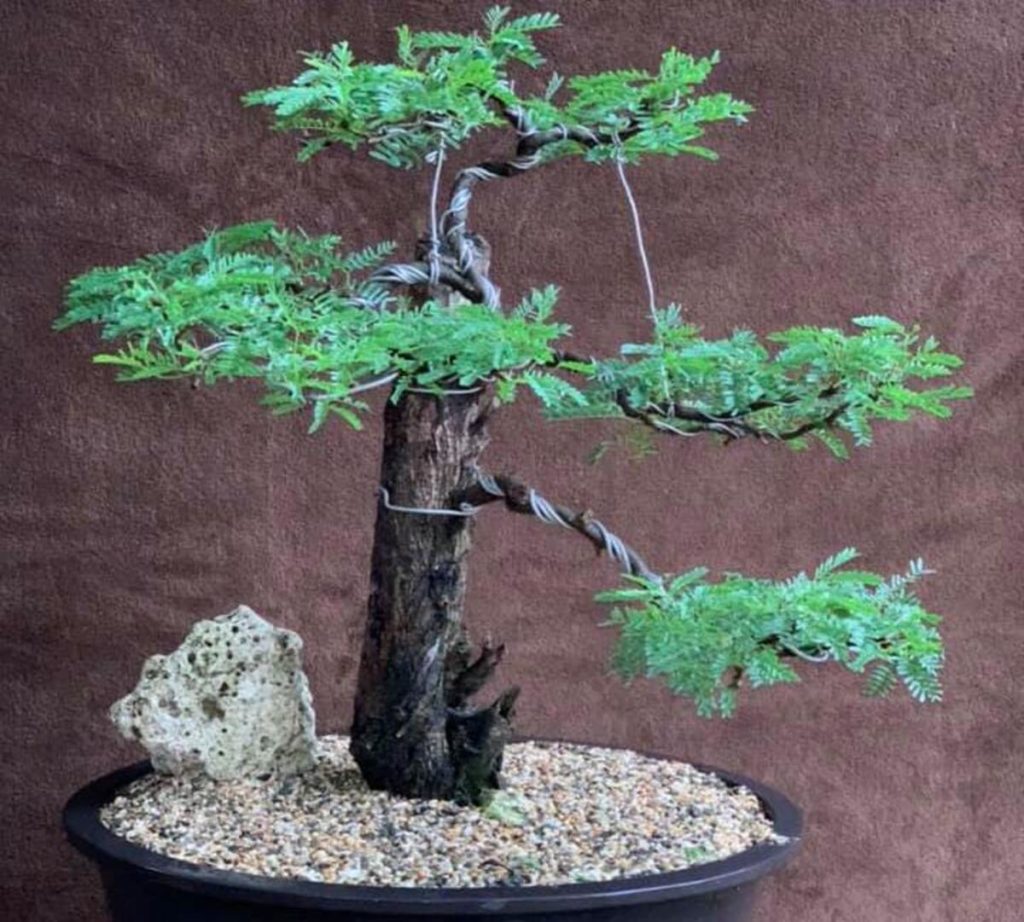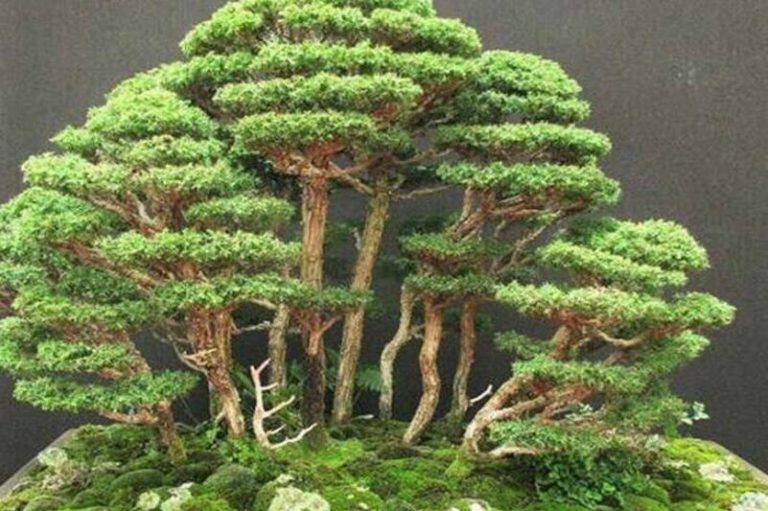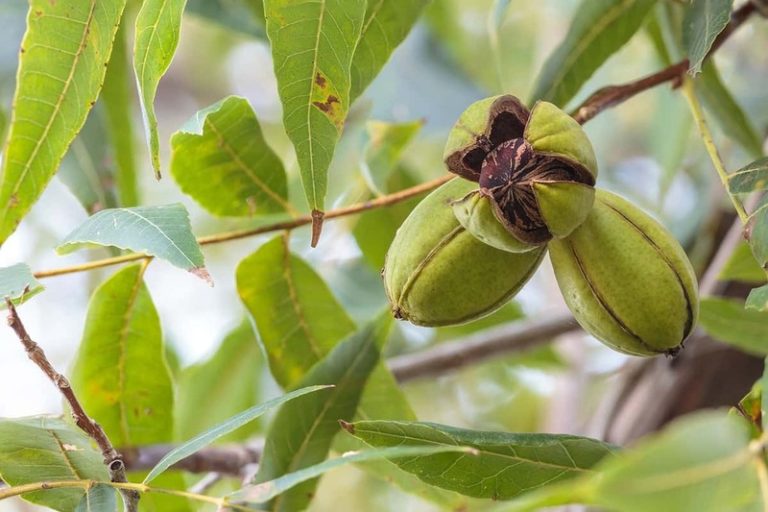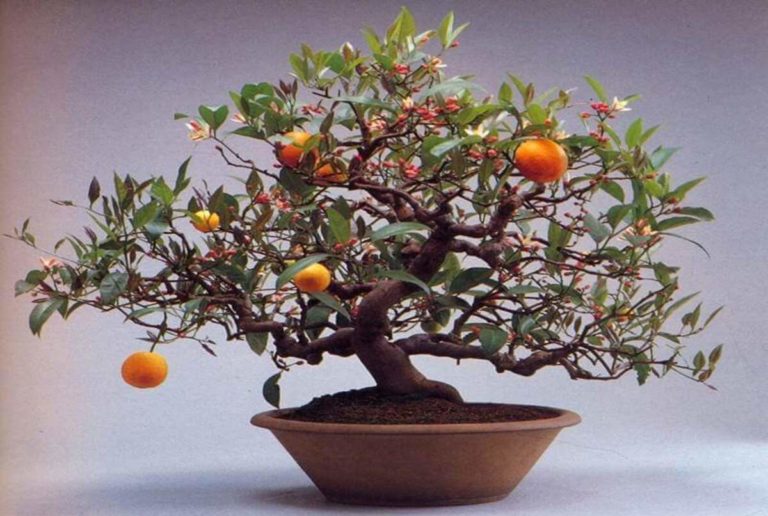Acacia Bonsai: A Miniature Tree That Enhances Your Living Space
A bonsai acacia is a diminutive tree cultivated in a container and trained to resemble a mature tree. Originating in Japan, it is regarded as a cultural icon there. The bonsai trees of Acacia are diminutive, with delicate foliage and distinctive bark. They are frequently used as decorative plants in residences and gardens due to their attractiveness.
What is Acacia Bonsai?
Acacia bonsai is a tiny tree cultivated in a container and styled to seem like a mature tree. It is a little, fragile plant with distinctive traits such as leaves, bark, and flowers. Acacia bonsai is a cultural emblem in Japanese art and culture that originated in Japan.
Acacia bonsai has a long history dating back to ancient, when it served as a peace and wealth sign. It evolved into a well-liked genre of painting over time and was applied to depict a range of notions and ideas. Acacia bonsai are popular decorative plants used nowadays and loved by people all over the world.
Types of Acacia Bonsai
There are several varieties of acacia bonsai, each with special qualities and features. The most well-liked varieties include:
Acacia dealbata – Also known as silver wattle, this type of acacia bonsai has delicate, fern-like leaves and produces bright yellow flowers. It is a fast-growing tree and is often used for landscaping.
Acacia tortilis – This type of acacia bonsai is also called umbrella thorn acacia because its canopy looks like an umbrella. It also has small yellow flowers. It is a tough tree that grows well in dry places.
Acacia farnesiana – This type of acacia bonsai is also called sweet acacia or needle bush. It has smelly yellow flowers and small, dark green leaves. Bonsai fans like it because it looks different from other trees.
Acacia baileyana – This type of acacia bonsai is also known as Cootamundra wattle. It has silvery, blue-green leaves and bright yellow flowers. It’s a tree that grows quickly and is often used in landscaping.
Acacia melanoxylon – This type of acacia bonsai is also called blackwood acacia. It has dark green leaves and small, cream-colored flowers. It is a slow-growing tree whose dense, dark wood is highly valued.
These are only a handful of the many acacia bonsai varieties available. Each kind has its own own beauty and features, making it an important addition to any collection.
Acacia Bonsai and Its Symbolism
Japanese culture attributes a great deal of cultural significance and symbolism to acacia bonsai. It is believed to symbolize affection, friendship, and loyalty, and is frequently presented as a token of appreciation.
In addition to these symbolic connotations, acacia bonsai symbolizes development and transformation. As it requires constant care and attention to flourish, the tree itself is a symbol of change and renewal. Cultivating an acacia bonsai can serve as a reminder to embrace transformation and change in our own lives.
Bonsai made from acacia trees are also thought to be hardy and strong. The tree is known for being able to stand up to bad weather and change to fit its surroundings. As such, it is a symbol of sticking with things even when they are hard.
The addition of an acacia bonsai to a home or yard is both beautiful and symbolic. It is a highly valued and revered plant in Japanese culture due to its extensive historical and symbolic significance, and it continues to receive widespread international acclaim and admiration.

Characteristics of Acacia Bonsai
Acacia bonsai is well-known for its specific traits. Some of the most remarkable characteristics of acacia bonsai are:
Leaves: Typically, Acacia bonsai has tiny, delicate foliage that are green in color. Some varieties may have translucent or blue-green leaves, which enhance the aesthetic allure of the plant.
Bark: Depending on the species, the bark of acacia bonsai might vary, although it is normally smooth and grayish-brown in color. The bark of an old tree may become tough and crack and fracture.
Flowers: Yellow blossoms that are typically lovely and aromatic are produced by Acacia bonsai. Depending on the species, the flowers may be small and compact or larger and more striking.
Size: A typical acacia bonsai is a small, tight tree that is grown in a pot. Depending on the type of tree and how well it is cared for, it can grow from a few inches to several feet tall.
Growth rate: Acacia bonsai is a tree that grows quickly, especially when compared to other bonsai species. It may grow several inches per year with adequate care and attention.
Resilience: Bonsai grown from acacia trees are hardy and may flourish in a variety of settings. It’s a durable and low-maintenance plant since it can survive in a variety of climates.
Overall, acacia bonsai is a rare and attractive plant with delicate leaves, distinctive bark, and beautiful blossoms. Its compact stature and adaptability make it a favorite among bonsai enthusiasts of all experience levels.
How to Grow Acacia Bonsai?
The cultivation of acacia bonsai requires attentiveness to its requirements and appropriate care. Here are the procedures required to cultivate an acacia bonsai:
Choose the right species: Choose a species of acacia bonsai that is well-suited to your climate and growing conditions from the many available.
Select the right pot: Select an appropriate-sized container for your tree. The container must have drainage openings so that superfluous water can escape.
Plant your tree: Fill the container with soil that drains well, then plant your acacia bonsai. Be sure to distribute the roots out gently to aid in their establishment in the soil.
Water your tree: Regularly water your acacia bonsai, but avoid overwatering it. Allow the soil to become marginally dry between watering.
Provide sunlight: Acacia bonsai requires plenty of sunlight, but not direct sunlight. Place your tree in a location that receives plenty of bright, indirect light.
Fertilize your tree: Acacia bonsai requires regular fertilization to ensure healthy growth. Use a balanced fertilizer once a month during the growing season.
Prune your tree: Prune your acacia bonsai regularly to maintain its shape and encourage healthy growth. Remove any dead or diseased branches, as well as any branches that are crossing or rubbing against each other.
Repot your tree: Repot your acacia bonsai every 2-3 years to refresh the soil and provide it with fresh nutrients.
By following these steps, you can successfully grow and care for your acacia bonsai, and enjoy its unique beauty for many years to come.
Benefits of Acacia Bonsai
Acacia bonsai provides a variety of aesthetic and practical benefits. Among the most notable advantages of acacia bonsai are:
Aesthetics: Bonsai acacia can lend a touch of natural beauty to any interior or exterior space.
Air purification: As with other plants, Acacia bonsai can aid in air purification by absorbing hazardous contaminants and pollutants.
Stress relief: Bonsai tree care, especially that of an acacia bonsai, has been shown to provide meditative and stress-relieving effects.
Educational tool: Children and adults may learn vital lessons about the natural world and the value of taking care of living things via acacia bonsai.
Cultural significance: Acacia bonsai and other bonsai trees have deep cultural and spiritual significance in different cultures and are often linked to luck, wealth, and other desirable qualities.
Outdoor decoration: Acacia bonsai may be a wonderful way to add some natural beauty and serenity to outdoor areas like patios, gardens, or balconies.
Acacia bonsai is a useful and flexible plant that has many positive effects on both people and the natural world.
Styling and Design for Acacia Bonsai
Acacia bonsai can be arranged and styled in many different ways to make beautiful and unique designs. Here are some ideas for how to design and style your acacia bonsai:
Choose a style: Bonsai styles include formal upright, informal upright, slanted, cascade, and semi-cascade. Choose a design that complements your personal preferences and the overall aesthetic of the room.
Consider the shape of the tree: Triangular, circular, and fan-shaped Acacia bonsai are all possible forms. Consider the tree’s natural form and how you can accentuate it through pruning and contouring.
Use wire to shape branches: Wire can be used to shape the acacia bonsai’s branches into the desired position. Be cautious not to apply excessive force, as this can cause injury to the branches.
Create a balanced composition: When designing your acacia bonsai, aim to create a balanced and aesthetically appealing composition. Consider the placement of each branch and leaf, and make any necessary adjustments to achieve a unified overall appearance.
Choose a suitable pot: While selecting a container for your acacia bonsai, keep in mind the tree’s size and the desired effect on the tree’s overall appearance. Think about the pot’s size, shape, color, and feel.
Incorporate natural elements: If you want your acacia bonsai to seem more natural and organic, try using items from nature, such pebbles, moss, or even other plants.
Use these guidelines to build an acacia bonsai that is as distinctive as you are and as complementary to your surroundings as possible.
How to Care and Maintain Acacia Bonsai?
To keep an acacia bonsai alive and healthy, it needs regular care and attention. Here are some tips on how to take care of your acacia bonsai and keep it healthy:
Watering: Regular watering of the acacia bonsai is necessary, but take care not to overwater it. Between waterings, let the soil somewhat dry out. Be sure you fully water the tree, making sure the water gets to the roots.
Fertilization: Acacia bonsai requires regular fertilization to ensure healthy growth. Use a balanced fertilizer once a month during the growing season, and reduce or stop fertilizing during the winter months.
Pruning: Prune your acacia bonsai regularly to maintain its shape and encourage healthy growth. Remove any dead or diseased branches, as well as any branches that are crossing or rubbing against each other.
Repotting: Repot your acacia bonsai every 2-3 years to refresh the soil and provide it with fresh nutrients. Repotting should be done in the spring or fall, after the tree has finished blooming.
Sunlight: Acacia bonsai requires plenty of sunlight, but not direct sunlight. Place your tree in a location that receives plenty of bright, indirect light.
Temperature: Acacia bonsai prefers warm temperatures and should be kept in a location with consistent temperatures between 60-85°F (15-30°C).
Humidity: Acacia bonsai prefers high humidity, so consider using a humidifier or placing a tray of water near the tree to maintain a humid environment.
Pest control: Keep an eye out for common pests such as spider mites, mealybugs, and scale insects. Use a natural insecticide or insecticidal soap to control pests, or remove them manually with a cotton swab or cloth.
Acacia Bonsai Care Sheet
| Aspect | Care Tips |
| Watering | Water regularly, allowing soil to slightly dry out between watering. |
| Fertilization | Apply a balanced fertilizer monthly during the growth season and stop fertilizing in winter. |
| Pruning | Regularly prune to maintain shape and encourage healthy growth. Remove dead, diseased or crossing/rubbing branches. |
| Repotting | Repot every 2-3 years in spring or fall after blooming. |
| Sunlight | Place in a location that receives plenty of bright, indirect light. |
| Temperature | Keep in a location with consistent temperatures between 60-85°F (15-30°C). |
| Humidity | Provide high humidity by using a humidifier or placing a tray of water near the tree. |
| Pest Control | Watch for spider mites, mealybugs, and scale insects. Pests can be removed with a cotton swab or natural pesticide or soap. |
By following these tips and providing proper care and maintenance, you can ensure that your acacia bonsai remains healthy and beautiful for years to come.
Conclusion
Acacia bonsai is a beautiful and unique plant that can enhance the aesthetic appeal of any living space. Proper care and attention are necessary to ensure that it thrives, but the effort is worth it. Whether grown for its beauty or its symbolic significance, acacia bonsai is a meaningful addition to any home or garden.
FAQ:
Q: What is an acacia bonsai?
A: An acacia bonsai is a miniature version of an acacia tree that is grown in a container as a bonsai.
Q: What are the different types of acacia bonsai?
A: There are several different types of acacia bonsai, including the Acacia dealbata, Acacia tortilis, and Acacia baileyana.
Q: How do I care for my acacia bonsai?
A: You should repot your acacia bonsai every two to three years and give it plenty of water, sunshine, fertilizer, and pruning during the growing season.
Q: How often should I water my acacia bonsai?
A: You should water your acacia bonsai regularly, but between watering, you should let the soil dry out a little. How often you water will depend on how humid and how warm it is where you live.
Q: Can I keep my acacia bonsai indoors?
Yes, you can keep your acacia bonsai indoors, but it will need adequate sunlight and humidity. Place it near a window that receives bright, indirect light, or use a grow light to supplement natural light.
Q: How do I prune my acacia bonsai?
A: To prune your acacia bonsai, use sharp pruning shears to remove dead or diseased branches, as well as any branches that are crossing or rubbing against each other. You can also prune to shape the tree or encourage healthy growth.
Q: When should I repot my acacia bonsai?
A: You should repot your acacia bonsai every 2-3 years in the spring or fall, after the tree has finished blooming. Use fresh soil and a new container that is slightly larger than the previous one.
Q: How do I control pests on my acacia bonsai?
A: Use a natural pesticide, insecticidal soap, or physically remove pests with a cotton swab or piece of cloth to manage them on your acacia bonsai. Watch out for typical pests including scale insects, mealybugs, and spider mites.
Also Read:







